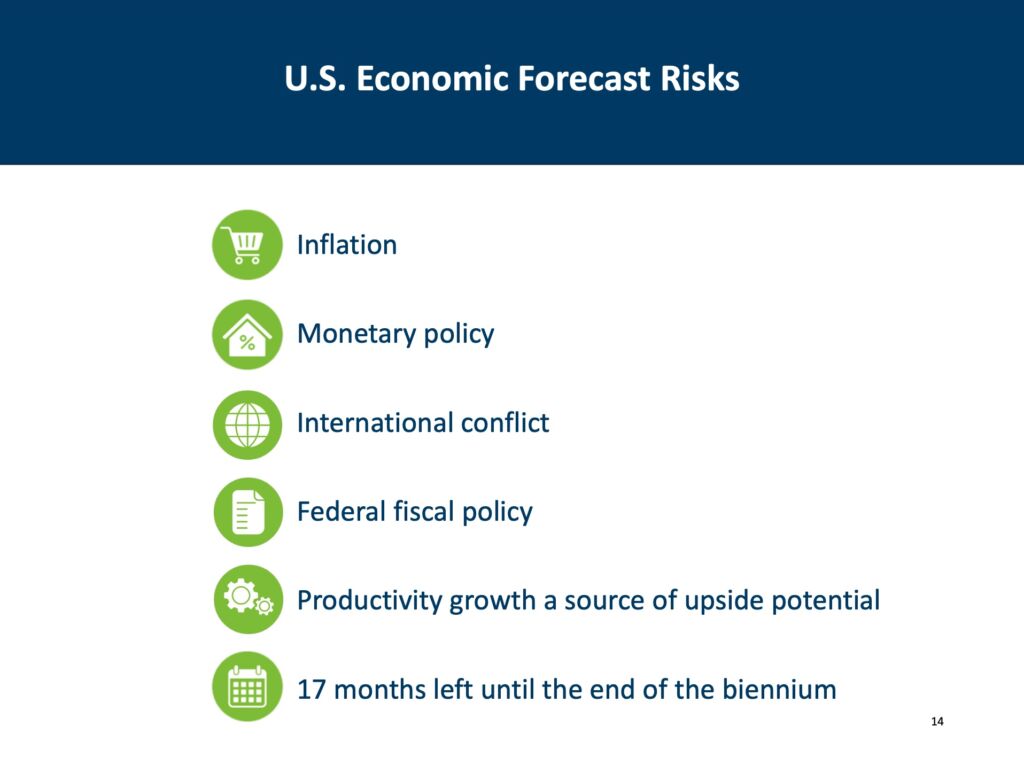Team Walz ignores risk of illegal immigration in state budget forecast
The Office of Management and Budget released the February forecast today showing an improved outlook for the economy and the state budget for the current two-year budget cycle. The state is on schedule to spend $70.5 billion in fiscal years 2024-25 with $60.9 billion in revenue. The difference will be made up with the huge $17.2 billion surplus from last year, leaving us with $3.7 billion on the bottom line.
The forecast for the next budget cycle also improved but still shows the state spending $1.4 billion more than it will take in ($66.2 billion in spending against $64.8 billion in revenue). The Walz administration admits this a “structural deficit” but claims everything will be fine as long as the legislature doesn’t spend the $2.2 billion balance that’s expected to carry over from the current (24-25) budget.
Even though the Minnesota economy continues to deliver tax revenue to the state at surprising rates, it’s hard to ignore the fact that we’re spending more than we’re taking in. I use the word surprising because it’s amazing the economy is still growing after all the tax increases foisted on it since 2013. Corporate tax revenue is projected to rise by $940 million by 2027, allowing Tim Walz to mock Republican arguments against taxing business as “theoretical.”
He’s right. Theoretically, taxing businesses the way we do in Minnesota should result in less activity and less revenue to the state. But Minnesota’s diverse economy continues to be resilient to whatever state government throws its way. The conservative argument should shift to two other talking points, one easy and one hard.
The easy argument against Walz/DFL budgeting is that even though revenue continues to rise, state government spending is rising even more. As American Experiment’s new report shows, spending on welfare programs is a ticking time bomb that will eventually outpace revenue. Welfare spending was not mentioned as a budget risk today because it came in as expected. No one on Team Walz is worried that $42 out of every $100 in new spending is going to Health and Human Services, with no end in sight.
The more difficult argument is to ask Minnesotans to imagine how much better things could be if we took less tax revenue out of this diverse, resilient economy. “It could be better!” is a difficult argument to make when the state has consecutive years with multi-billion budget surpluses. And with every passing year, voters seem to care less about taxes and government spending when they cast their votes. They tell pollsters, including our quarterly Thinking Minnesota poll that taxes are too high (60% in May 2023), but cast their vote on other issues such as abortion.
But the fact remains, it could be better. States such as Tennessee, North Carolina and even Iowa are cutting tax rates, improving the quality of life for their residents and attracting people to move to their states while Minnesota continues to lose productive citizens.
Immigration risk brushed off
In every budget forecast, the state economist includes a slide on forecast risks.

One risk conspicuously absent from this list is the effect of illegal immigration on the country and on Minnesota. The press asked State Economist Dr. Laura Kalambokidis about immigration, and she asserted it is still a net positive for the economy in terms of adding to the labor force. No mention of the cost illegal immigration on school enrollment, health care (free for immigrants) college tuition (free for immigrants) and crime.
Illegal immigration could turn out to be a huge drain on state and local resources, just like we’re seeing in New York, Chicago and Denver. And the problem will be exponentially worse if the legislature adopts the proposal to make us a sanctuary state. (If you haven’t sent an email to your legislator about this yet, click here).